Nubuck Vs Suede – What’s the Difference?
To start, let’s be clear: both suede and nubuck are types of leather.
We don’t blame you if you’re confused — suede and nubuck have a totally different texture than what you typically picture when you think “leather.” Leather is what you get when you take an animal hide and tan it to produce the durable, supple material that makes up your boots. If it’s made from animal hide, it’s leather.
While a typical leather has a relatively smooth surface, suede and nubuck have a napped, velvet-like finish. Suede and nubuck look sort of similar because they’re both made by sanding and buffing the leather to give it its signature texture. So does that mean they’re the same? Not exactly. Let’s take a look.
What Is Suede?
- Made from the underside of the animal’s skin
- Soft, more delicate
- Lightweight, pliable
The name “suede” comes from the French phrase “gants de Suède” which literally means “gloves from Sweden.” Like the name suggests, this material is great for more delicate items, like gloves, where you’re looking for a soft, flexible fit, because suede is both lightweight and pliable.
Waxed Suede on the first Taft Dragon Boot
Suede is made by sanding down the underside of the animal skin, rather than the side that faces out in the world. This means it’s thinner and more supple than nubuck or regular leather. It also means it’s less durable, which is the tradeoff you make with this super soft material. You’ve also got to be careful about water damage; without a protective coating, even a shower of rain can cause irreversible stains in some kinds of suede.
Not all suede is super sensitive, though. Waxed suede takes all the best parts of the material — the texture and flexibility — and ups the durability factor with a waterproof coating of wax. I particularly like the Taft Dragon Boot, a rustic-looking, waxed-suede, waterproof boot which hardly picked up any scratches after weeks of wear.
[Become an expert – read my review of the Timberland Premium Waterproof Boot!]
What Is Nubuck?
- Made from the outside of the animal’s hide
- Usually more durable than suede
- Sanded or buffed to give a slight nap
Nubuck, unlike suede, is made from the outside of a hide, which means it’s a more durable, long-lasting material, and can withstand more scuffing than your average suede. It’s historically made with the buckskin of a deer or elk, but modern nubuck is often made with calfskin, which is super soft. The softness is also because it gets sanded or buffed on the grain side (the outside of the leather) to give it a slight nap of protein fibers.
Since it’s made from the outer hide, nubuck can come with imperfections, which some would argue lend it character. One the other hand, plenty of manufacturers offer smooth, clean products by dyeing or staining the material to remove any visible imperfections so your boots look flawless out of the box.
Keep in mind that nubuck can come with a higher price tag, since it’s made from a more durable leather — but not always. Timberland, for example, make their classic boot with nubuck and are relatively cheap, given their quality. For more on Timberlands’s iconic wheat boot, check out our review.
One last thing to note: nubuck doesn’t develop patina like suede or leather do, so if you’re looking for the character that comes with wearing in a pair over time, nubuck is not for you. If you’re into the napped texture, but also want a hard-wearing, patina-developing pair of boots you can wear in all types of weather, you probably want roughout leather; the Truman Java Waxed Flesh boot, made with vegetable-tanned roughout leather, is one of our all-time favorites that fits the bill.
[See where Truman places on our full roundup of the best boots on the market here!]
How to Take Care of Suede and Nubuck
To start: get a brush. Whether you’re working with suede or nubuck, the raised texture of the material means it traps dirt more easily than leather, which can make it look dingy if you neglect it. A simple brush is your best friend when it comes to keeping your shoes looking sharp: it gets under the nap of the material, brushing the dirt out and restoring the texture of your boots.
This 4-way Shacke brush has a couple of different textures, which means you can use it on both suede and nubuck boots, plus it’s got these handy protruding bits for getting in creases and corners.
A brass wire brush can be better for suede with shorter fibers.
[Embossed suede on the Taft Dragon 2.0 boot]
Got stubborn stains that are resisting your brush? Whatever you do, don’t add water! Water is not your friend, here. If dry brushing is not enough to clean a stubborn spot, then you’ll want to invest in a suede/nubuck specific cleanser. We recommend Renewbuck & Dry Cleaner Kit from Timberland, which, in addition to having a great name, can erase even stubborn oil stains from your boots.
Speaking of water, a high-quality waterproof spray, like this one from Kiwi is a game-changer when it comes to making your suede and nubuck shoes last. Kiwi gets bonus points for UV protection, which keeps your boots from getting brittle from sun exposure which means you’re covered, rain or shine.
Want to Waterproof Your Suede?
Suede isn’t great in inclement weather, but the Taft boots you can see in this article have been waxed to make them practically waterproof. You can do the same to your own suede boots by picking up some Otter Wax Heavy Duty Fabric Wax.
[Learn more in our Ultimate Guide to Caring for Suede.]
So Should You Get Some of the Soft Stuff?
If you’ve already got a good, sturdy pair of leather boots, adding a suede or nubuck pair to your collection is a great idea. They’re comfortable and stylish without the painful break-in period that often accompanies high-quality leather. Both suede and nubuck are great for Chelsea or chukka boots — perfect for going into the office and out on the weekend without looking like a schlub.

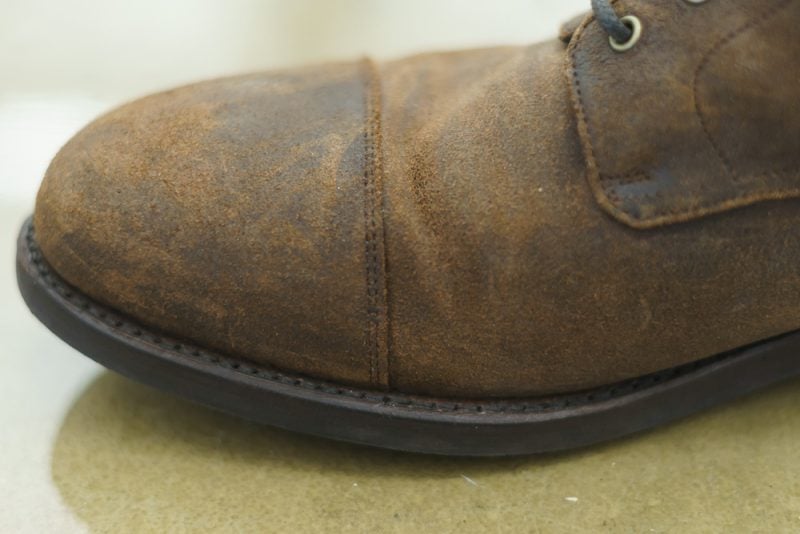
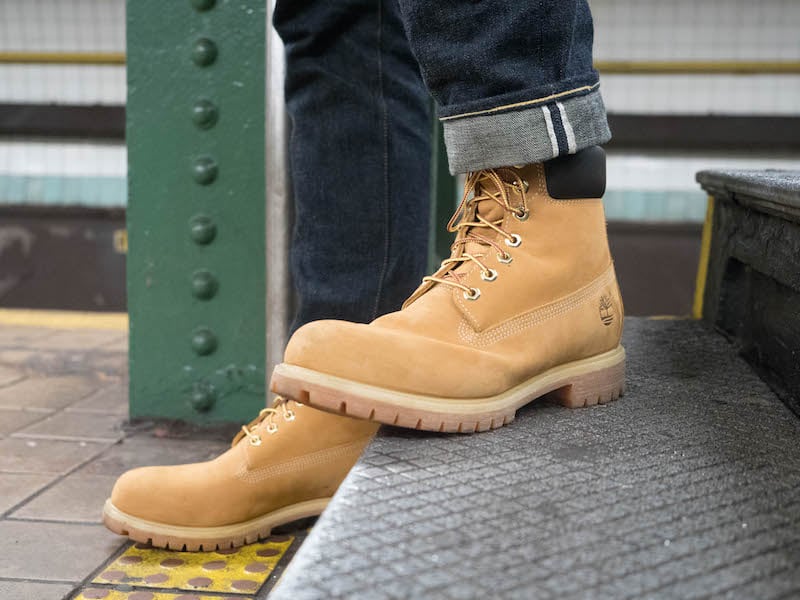

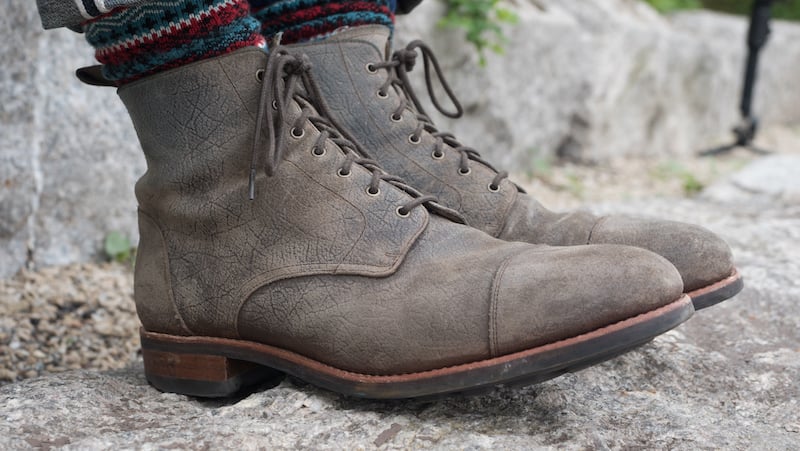
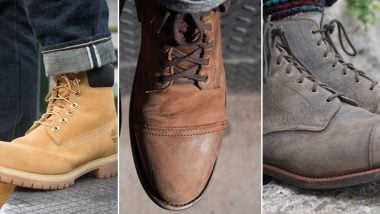

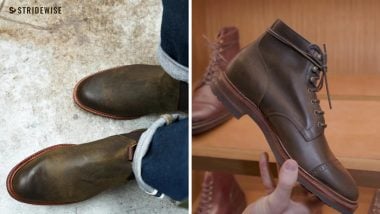



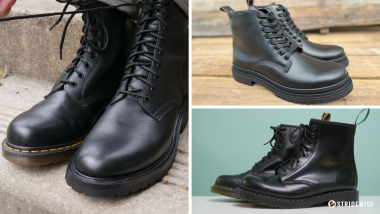


I thoroughly enjoyed the article! It was more of an education than I expected, and I was pleasantly surprised!! Wow, seems I knew little about leather!! Thanks again for the education!
Haha delighted you found it useful, Chip!
Brushing suede or nubuck regularly will raise the nap and remove dirt and dust. This will keep your shoes looking smooth and fresh. This is a quick and easy way of looking after either material.
Yep, that’s a method that keeps things simple!
Ordered some mark albert nubuck outriders. Was hoping those were waterproof but sounds like I may need to weatherproof it before wearing them on a hiking trip.
Thank you for this information, I was going to go ahead and wear my new Hotter suede boots outside right away… but after this article I took the advice to purchase Kiwi products to protect my new boots. Thanks for the education… now I’m sure they’ll last me quite a while!
Hey so glad it was helpful, Anna! Appreciate your comment.
Thank you for this article! So basically nubuck only can be made using calf/cow or deer and not other animal?
No it can be made with anything, it’s just usually steer.